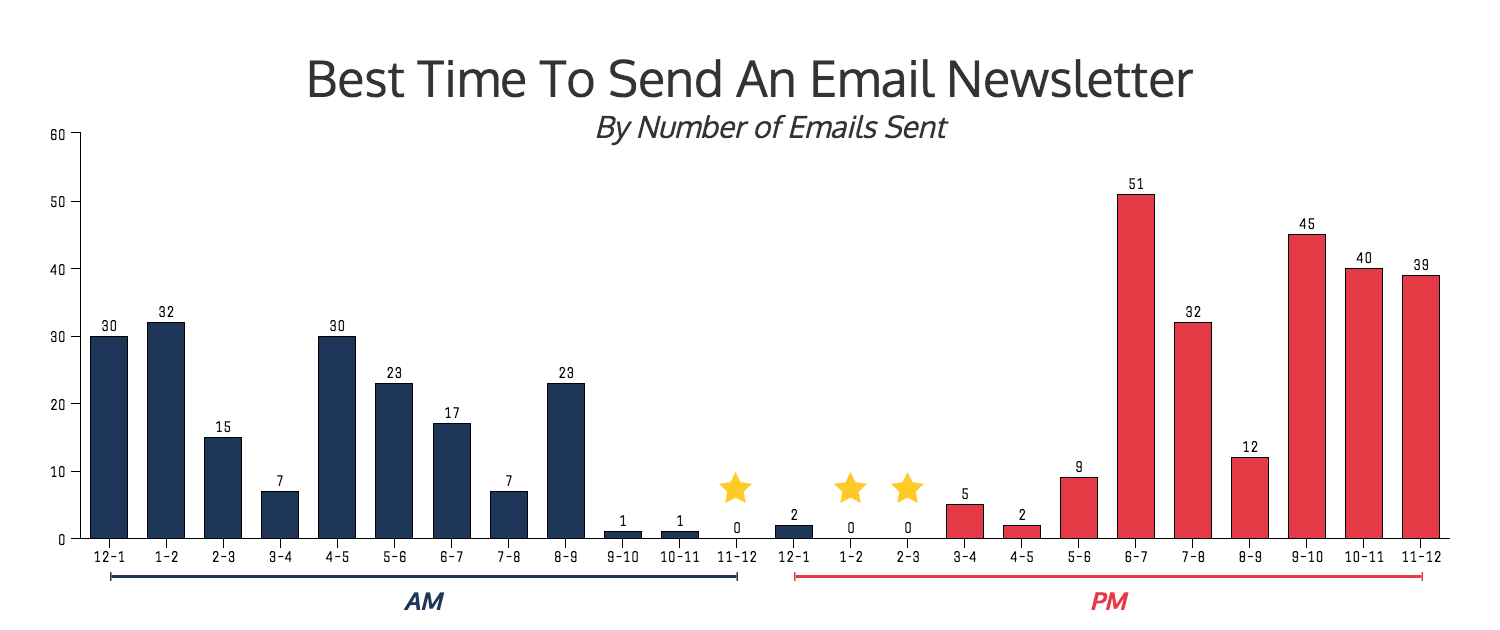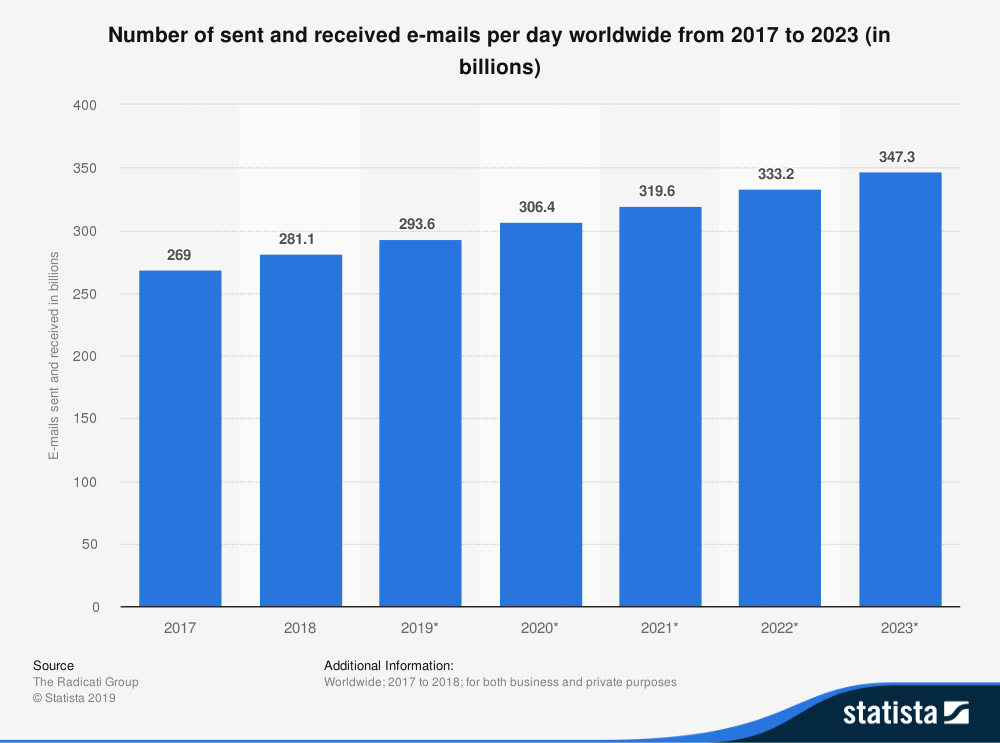Commercial real estate is all about selling and leasing property for commercial use.
To get those potential clients to turn into loyal supporters of your business, though, you need to reach them and show them why they need to do business with you.
In the past few years, various marketing channels have enabled commercial real estate businesses to promote their services and acquire new customers.
While advertising and social media are great, email marketing is still the most cost-effective marketing channel to get your real estate business to higher heights.
Why do you need email marketing?
If you’re wondering why email beats the majority of marketing channels, let’s take a look at the statistics.
According to a report by DMA, email marketing ROI has shot up to $55 for every $1 you spend on it.
While ROI plays a major role in choosing the right channel, email has another secret weapon that establishes it as the perfect ally for commercial real estate businesses.
Emails are increasingly popular with consumers who use them to communicate with their peers and receive relevant information from their favorite brands.
As the popularity of email grows, commercial real estate businesses need to leverage the tremendous capabilities to engage with their prospects and leads.
To increase the likeability of selling or leasing your listings through email marketing, though, you need to find the best practices to leverage it properly.
To give you a helping hand, here are 4 simple tactics to build an effective email marketing strategy for your business.
1.Capture your leads
Building a mailing list is of paramount importance for every successful commercial real estate email marketing strategy.
The easiest way to capture your prospects’ email addresses is through a newsletter signup form found on your website.
Newsletter signup forms are the ultimate tool to start building your mailing list and segment your audience based on demographics.
But before you start capturing your leads, you should first find the right tool to create your forms!
The easiest thing is to choose one of the best online form builders in the market. Then, you can either create a form from scratch or choose and customize one of the available templates to save time.
Here’s an example from Transwestern’s website.

To increase your newsletter signup rate, you should consider the following:
- Make your forms as simple as possible to minimize distractions.
- Find the perfect balance between your form copy and colors.
- Highlight the value of joining your list is the key to increasing signups.
- Create a CTA that stands out to prevent your leads from missing it.
2. Create the perfect subject line
Your subject lines are the first thing your subscribers will come across when you send them your campaigns.
Effective subject lines should be able to capture your audience’s attention and make them click on your emails. However, what makes them effective?
First of all, your subject lines must be free of spammy words that will either lead them to your subscriber’s spam or trash folder.
The more authentic and honest your subject lines are, the better they will perform.
Furthermore, coming up with the perfect impression trigger isn’t only a matter of quality but quantity as well.
Shorter subject lines are not only easier to digest, but they are perfect for mobile devices and mobile-first users.
To make sure that your subject line performs, try using a subject line tester to identify any problems and tweak them accordingly.
Finally, personalization is your secret weapon to increase your open rate. To personalize your subject lines you can start by including your subscriber’s name or their location.
3. Time your email campaigns
A perfect subject line and email copy will, undoubtedly, help you increase your open rate and CTR.
However, that won’t happen if you don’t find the best time to send your emails. Due to the nature of your audience, sending them an email on a wrong day will result in missing it.
For instance, sending a campaign on a busy day like Monday won’t give you the open rates you desire.
Similarly, you should avoid Fridays since they are the last day of the week and your audience might not even check their inbox.

By taking a look at statistics, the best time to send your commercial real estate emails should be between Tuesdays and Thursdays between 9 am and 6 pm.
4. Focus on email deliverability
Creating the perfect email campaign will be in vain if you don’t make sure that your email reaches your subscriber’s inbox.
To ensure that your subscriber opens and clicks through, you need to improve your email deliverability.
Email deliverability is a process that refers to the successful delivery of an email into a recipient’s inbox.
Without email deliverability, you won’t manage to target your audience and get more clicks to your website. So, to improve your deliverability, you need to pay attention to the factors that affect it.
For instance, your sender reputation is the reputation of the email address used to deliver your email campaigns.
If you want your messages to reach your audience, then you should make sure that you have a good reputation to avoid ending up in spam folders.
To do that, you should consider using various email deliverability tools to ensure that spam filters won’t prevent your online messages from reaching your audience’s inbox.
Commercial Real Estate Email Marketing Done Right
Getting yourself into the world of email marketing will give you the right tools to reach and engage with your audience in the most effective way.
So, next time you consider email marketing for your commercial real estate business, take into account these simple yet effective tactics and do commercial real estate email marketing the right way.
Author bio
 Marilia Dimitriou is a Creative Writer working for email marketing software Moosend. Her passion for writing has made her find new ways to combine the art of Creative Writing with SEO Copywriting. When she’s not writing articles, you’ll find her enthusing over marketing tech and automation.
Marilia Dimitriou is a Creative Writer working for email marketing software Moosend. Her passion for writing has made her find new ways to combine the art of Creative Writing with SEO Copywriting. When she’s not writing articles, you’ll find her enthusing over marketing tech and automation.










